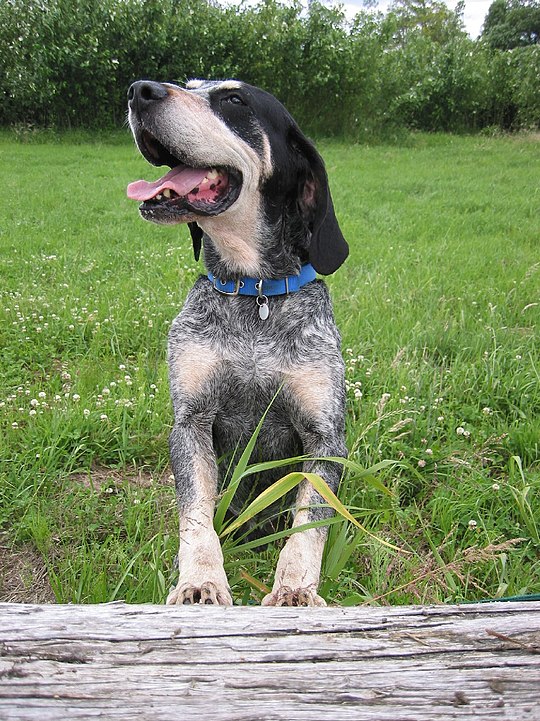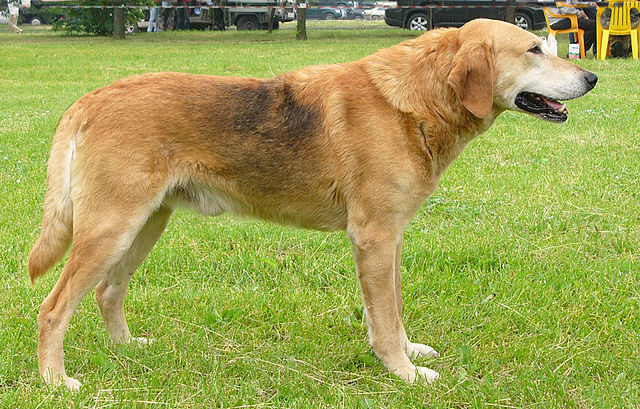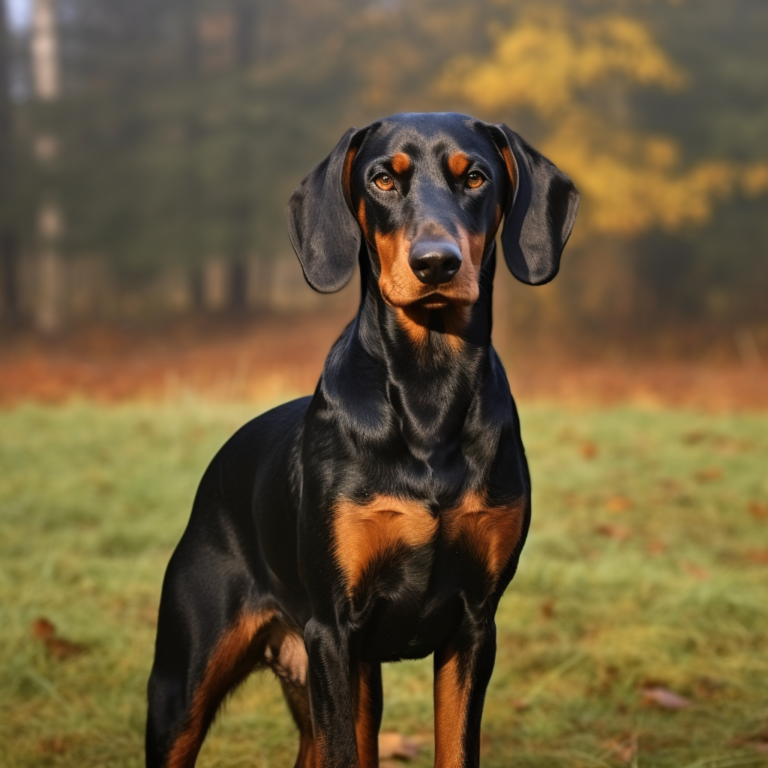The Grand Bleu de Gascogne is an ancient scenthound developed in France. This breed is primarily used for working and not often seen as strictly as a companion or as solely as a show dog. Even when showing, every part of the standard is meant to emphasize a working dog that is able to do their job with ease. In the field, they are masters at tracking and have great endurance and stamina when hunting – their prey being wolves, deer and boar. This is a noble dog with a very large frame, powerful voice (read: can be loud), yet gentle and refined in temperament.
Grand Bleu de Gascognes are not guard dogs, although their size alone might be enough of a deterrent. If an intruder cannot see the dog in the home, he may be able to hear him! The Bleu is known for his melodic, yet loud voice and he uses it freely. This can be bad for those with close neighbors but great for people living in rural settings who want it to be obvious that a dog resides at the property. If a person were to break in, the dog might not actually take any action, however. While aloof with strangers, they aren’t normally the type to attack.
Like many hounds, Grand Bleus can be willful, independent and stubborn. They also have high prey drives and are prone to “forgetting” their recall when a prey animal is near. Although very affectionate and intelligent, they may take extra time to be trained. Young dogs can be quite mischievous so they need plenty of supervision and guidance for the first couple of years, in addition to regular obedience training. An owner must be very patient while the dog is maturing, expecting a certain degree of mischief while also working through it with training. For this reason, he is recommended for experienced dog people and might be a bit “too much” for a first-time dog owner.
The Grand Bleu de Gascogne does need plenty of exercise, as might be imagined from his heritage as a hunting scenthound. Two hours of walking or similar activity is the minimum required. It is highly recommended that an owner take the dog hunting on a regular basis in order to fulfill his mental and physical needs, however if this is not possible other similar activities could be substituted. Overall however, this is a dog who does best when he is given plenty of body/mind stimulation. Off-leash exercise can be best in order to let him sniff, run and hunt however this is definitely NOT recommended in a city or suburban setting. If in a populated area, the leash must stay on in order to keep him from running into a road and getting hit.
One of the key features of the Grand Bleu is the blue mottled coat – this and his very large size (he is one of the biggest scenthounds) distinguishes him from other hounds. Other distinct traits include the long muzzle and even longer pendulous ears. Luckily, despite his slightly loose lips he is not as drooly as other similar breeds. His shiny coat needs weekly grooming but overall his grooming needs are fairly minimal.
The Grand Bleu lost favor in his home country of France and is no longer popular in that country. Many had been imported into the United States and breeders here are working to preserve this ancient hound, however even in American this is considered a rare breed. One of the possible reasons for their low popularity is the fact that they are hunting dogs first and foremost, and companion dogs second. They can be more destructive and more prone to escape the yard than many other breeds. They are also slow to mature and require more patience during their early years. This said, the breed has many fantastic qualities for those who are looking for fabulous hunting and/or tracking dogs, and with the right education and exercise can make loving and noble pets.



